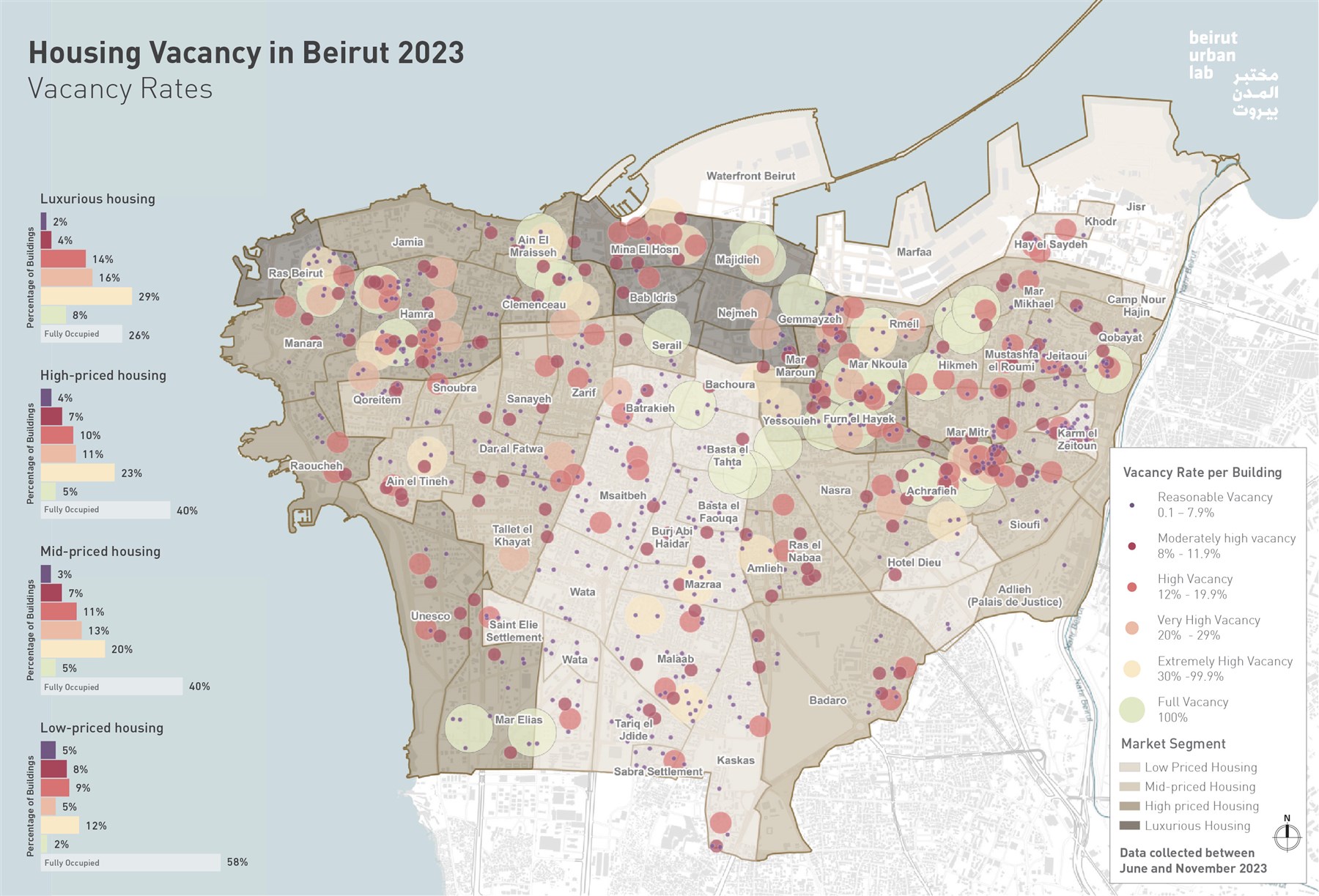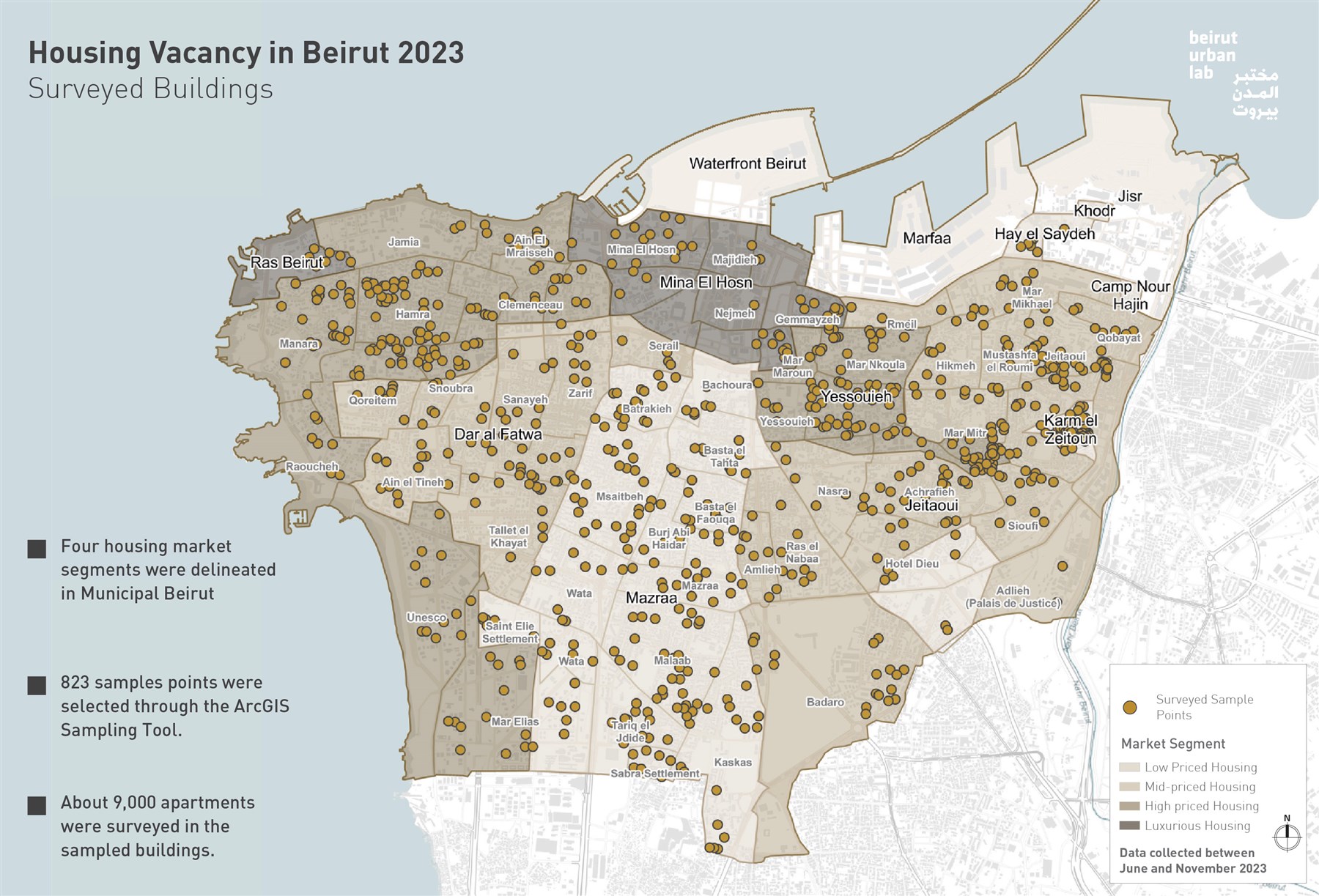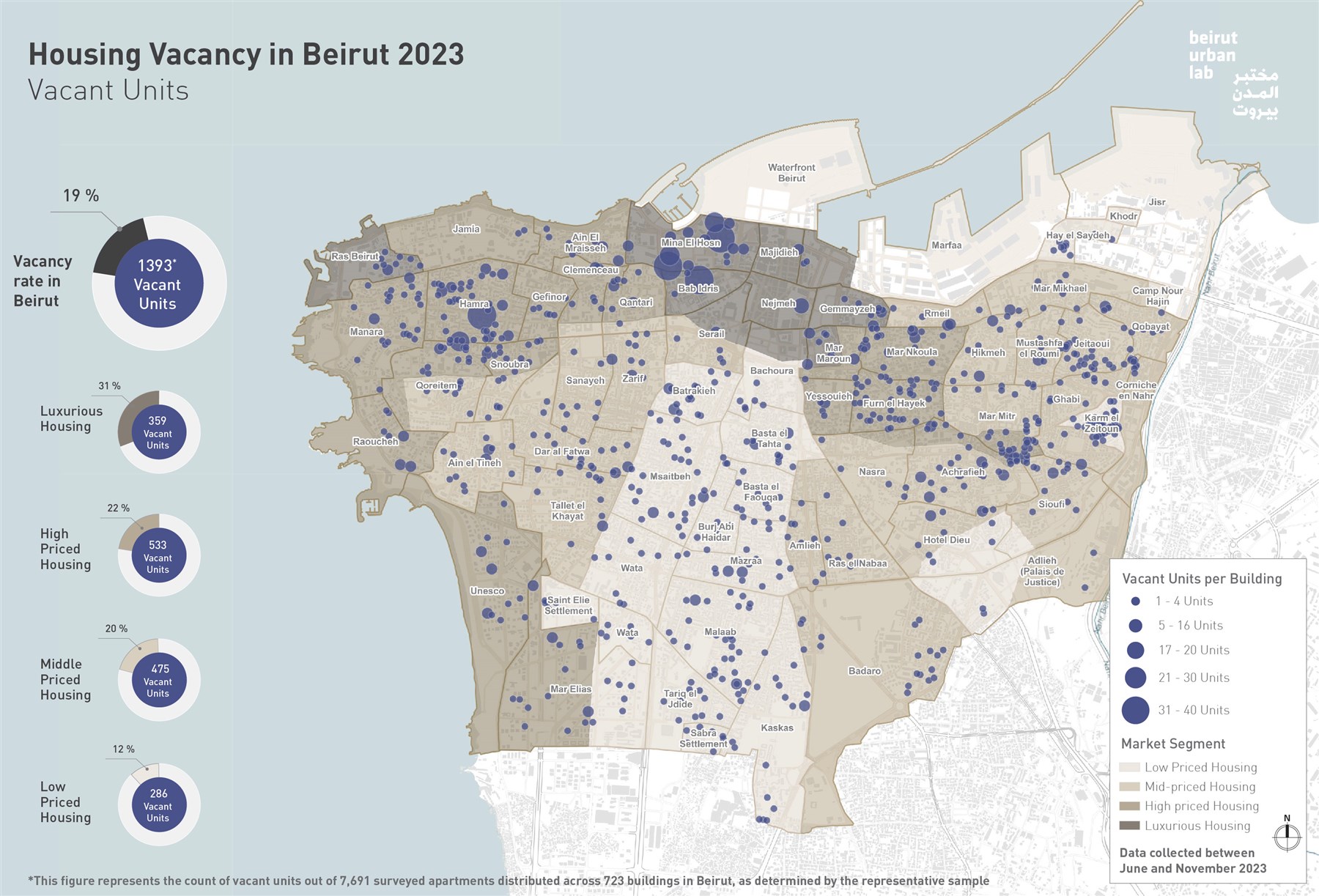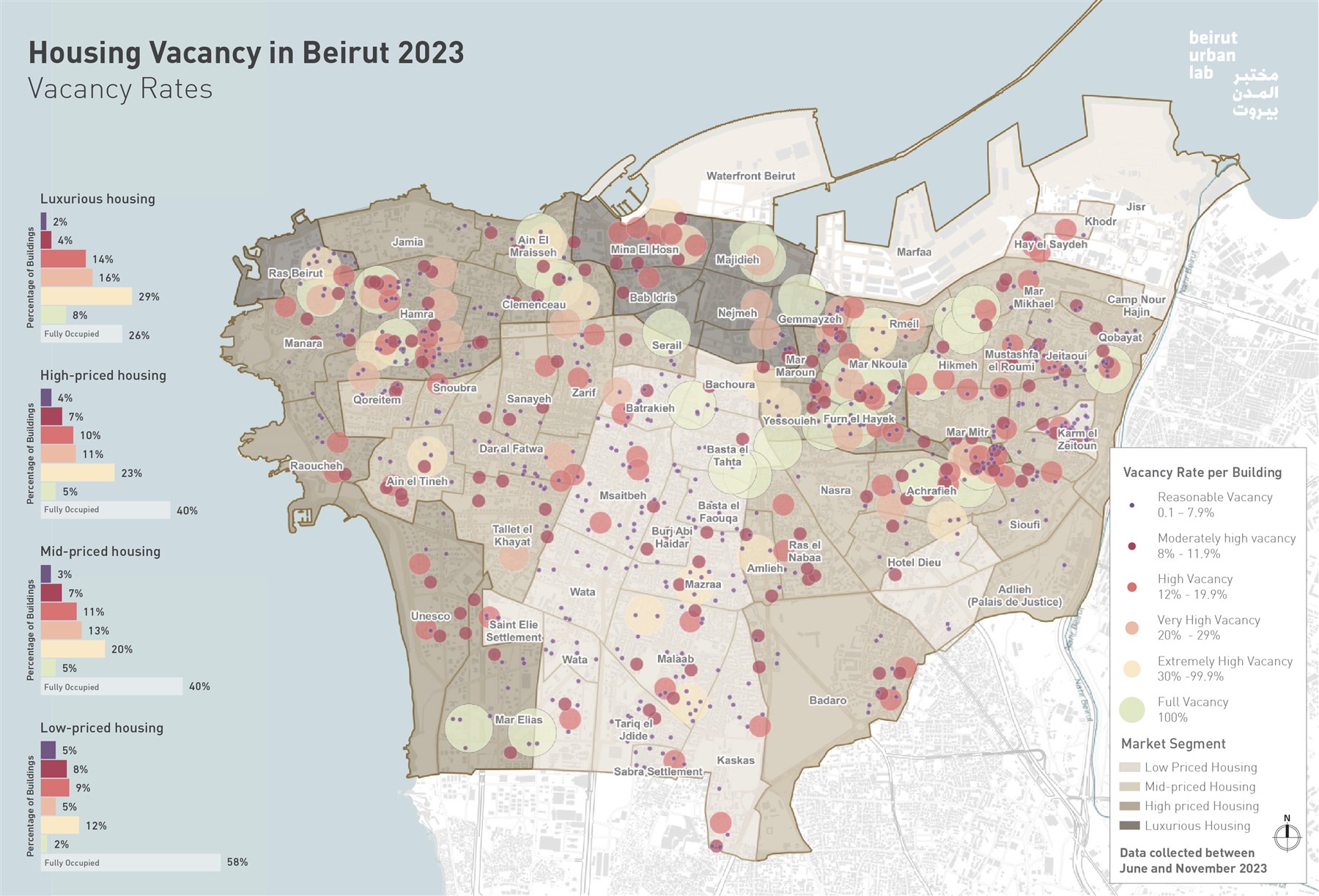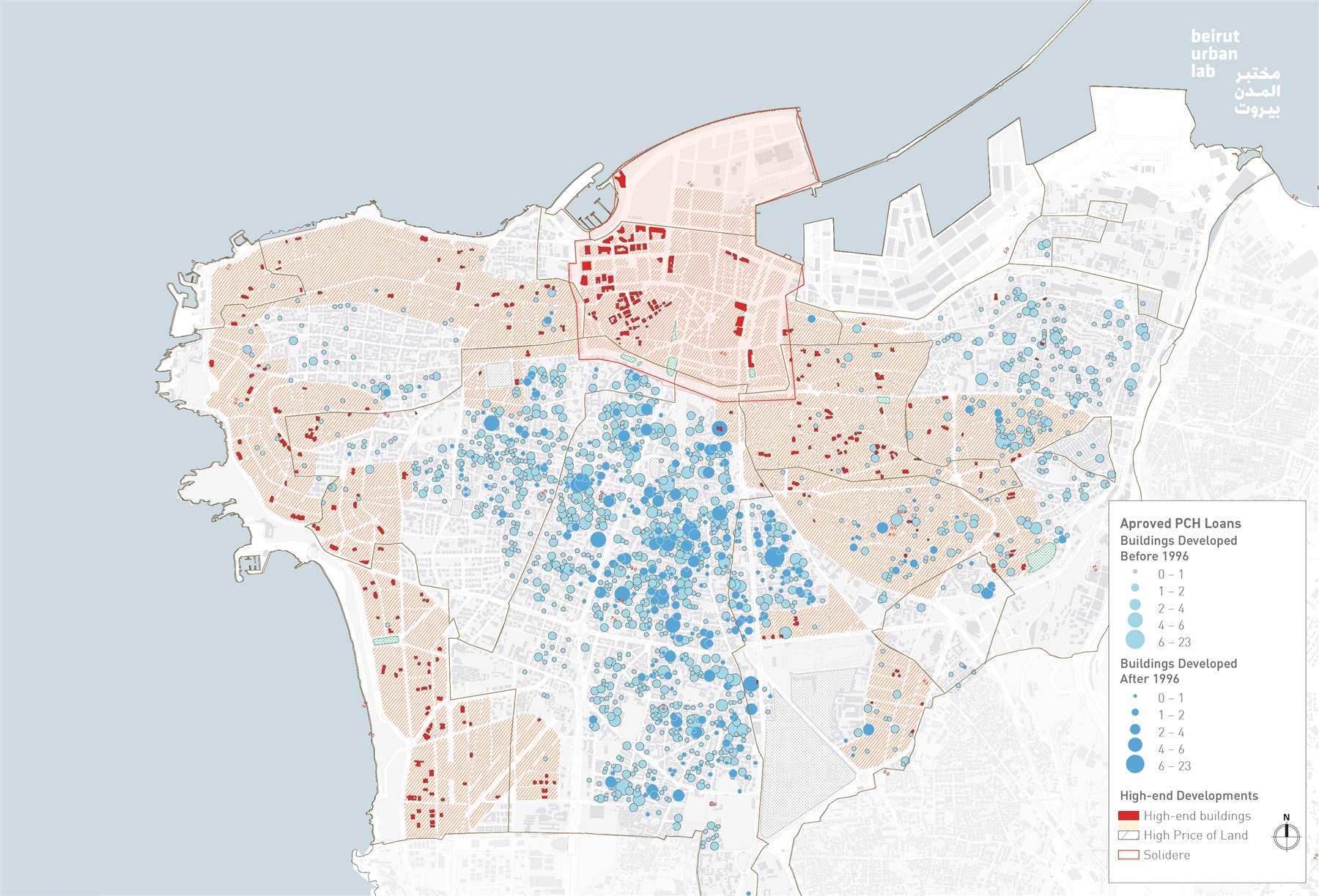Housing Vacancy in Beirut 2023: Drivers and Trends

In order to respond to this urgency, the Beirut Urban Lab conducted in Summer 2023 a housing vacancy survey that covered a representative sample of Municipal Beirut, divided across its market segments. The main findings of the survey are presented and analyzed in the published research report titled “Housing Vacancy in Beirut 2023: Drivers and Trends.”
The report accurately assesses the severity and spread of housing vacancy in Beirut. Five main points emerge:
1. The survey confirms that Lebanon's capital suffers from alarmingly high housing vacancy rates (about 20%), which spread across all neighborhoods, rich and poor, and extend to almost all the city's buildings.
2. The survey shows that rising apartment prices correlate with higher vacancy rates and lower rental occupancy rates, with housing vacancy rates peaking at 31% in the city’s luxurious segment.
3. The survey found that housing vacancy in Beirut is endemic and persistent, with around three-quarters of the surveyed vacant stock remaining empty for over two years.
4. The survey found that apartments developed during the post-Civil War period record the highest rates of vacancy across the city, confirming the speculative role attributed to the housing sector in post-war Beirut.
5. The survey further found that almost all the surveyed vacant apartments (90%) are in good condition, and that they hence are inhabitable and could be put to use if owners are appropriately incentivized.
Looking into the drivers behind vacancy, the report argues that Beirut’s housing vacancy crisis is produced by a policy framework that incentivizes speculative behaviors. The report recommends that decision-makers consider immediate and urgent policy responses, beginning by canceling the waiver from vacancy taxes for empty units. This step, the report argues, is only the first of a list of interventions needed to activate the existing housing stock in ecologically and socially responsible ways.
